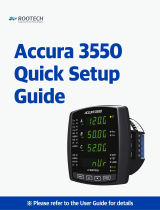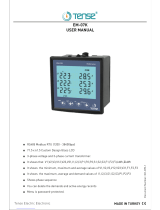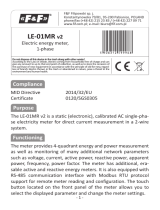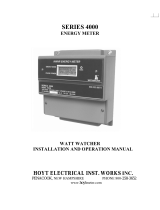Page 2 of 26
CONTENTS
1 BASIC INSTRUCTIONS .............................................................................................................. 3
1.1 Checks on receipt. ............................................................................................................ 3
1.2 Main features ................................................................................................................... 3
1.3 Electrical parameters ........................................................................................................ 3
1.4 Other features .................................................................................................................. 4
1.5 Available models ............................................................................................................. 4
2 INSTALLATION AND START-UP ............................................................................................... 5
2.1 Installation ...................................................................................................................... 5
2.1.1 Power supply voltage .................................................................................................. 5
2.1.2 Maximum voltage in the voltage measurement circuit ................................................... 5
2.1.3 Maximum permanent current in the current circuit ........................................................ 5
2.1.4 Transistor output features ............................................................................................ 5
2.1.5 Temperature probe features ......................................................................................... 5
2.1.6 Operating conditions .................................................................................................. 6
2.1.7 Safety ........................................................................................................................ 6
2.2 Start-up ........................................................................................................................... 6
2.2.1 Description of terminals .............................................................................................. 6
2.2.2 Connection diagrams .................................................................................................. 7
3 OPERATING MODE .................................................................................................................... 7
3.1 Keypad ........................................................................................................................... 8
3.2 Default settings ................................................................................................................ 8
3.2.1 Default display ........................................................................................................... 9
3.2.2 LED Indicators......................................................................................................... 10
4 SETTING SET-UP ...................................................................................................................... 10
4.1 Measurement Set-up ....................................................................................................... 10
4.1.1 Transformation Ratios .............................................................................................. 11
4.1.1.1 Voltage primary value ........................................................................................ 11
4.1.1.2 Voltage secondary value ..................................................................................... 11
4.1.1.3 Current primary value ......................................................................................... 11
4.1.1.4 Current secondary value ..................................................................................... 12
4.1.2 Measurement in 2 or 4 quadrants ............................................................................... 12
4.1.3 Power demand meter parameterisation ....................................................................... 13
4.1.3.1 Integrated parameter ........................................................................................... 13
4.1.3.2 Integration period ............................................................................................... 13
4.1.3.3 Clearing power demand meter value .................................................................... 14
4.1.4 Display and backlight ............................................................................................... 14
4.1.4.1 Selection of screens to be displayed ..................................................................... 14
4.1.4.2 Selection of start page ........................................................................................ 14
4.1.4.3 Backlight (Backlit display).................................................................................. 15
4.1.5 Clearing energy meter values .................................................................................... 15
4.1.6 Setting THd or d ...................................................................................................... 15
4.1.7 Digital output for the transistor (2) ............................................................................. 15
4.1.7.1 Impulse per n KW·h or Kvar·h consumed or generated ......................................... 16
4.1.7.2 Alarm condition ................................................................................................. 16
4.2 Communication Set-up ................................................................................................... 19
4.2.1 Default settings ........................................................................................................ 19
4.2.2 Peripheral number .................................................................................................... 20
4.2.3 Transmission speed .................................................................................................. 20
4.2.4 Parity ...................................................................................................................... 20
4.2.5 Data bits .................................................................................................................. 21
4.2.6 Stop bits .................................................................................................................. 21
4.2.7 Protection of data Set-up using password ................................................................... 21
5 APPENDIX – CVM-MINI-ITF-HAR-RS485-C2 SERIES .............................................................. 22
6 MODBUS RTU PROTOCOL ...................................................................................................... 23
6.1 MODBUS memory map ................................................................................................. 23
6.2 RS485 Connection diagram ............................................................................................ 26
7 TECHNICAL SERVICE ............................................................................................................. 26

























